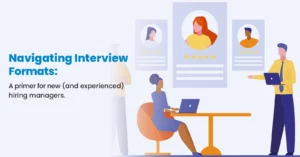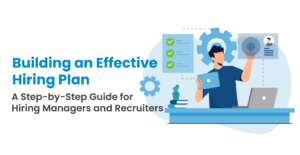The Great Resignation’s peak saw workers quit by the tens of millions, most of them for new job opportunities.
But many of these employees have since discovered that the grass is not necessarily greener in new pastures. As these individuals again seek new roles while many organizations — including their former employers — struggle to fill vacancies, a growing number of companies are reuniting with ex-employees, or “boomerang hires.”
About 4.5% of new hires in a survey conducted via LinkedIn in 2021 were boomerang workers, according to company data; this represents an approximately half-percent jump from 2019 and is a number that’s expected to rise as the Great Resignation continues. Of laborers who quit their jobs during the pandemic and had not returned to their previous employers, LinkedIn further reports that 41% would consider going back.
But should companies always welcome back boomerang hires? How do organizations subtly leave a door open for treasured talent? And when companies decide to make boomerang hires, how can they ensure a smooth return?
Part with Talent on Good Terms
A recent Gallup workplace culture poll found that departing workers with a positive exit experience are nearly three times more likely to recommend that organization to prospective workers. They are also more likely to express an interest in coming back.
It therefore becomes crucial for organizations to be thoughtful about the offboarding experience provided to employees who quit. In some organizations, there can still be a culture of portraying exiting employees as disloyal. This generally puts a negative spin on what is a crucial moment for the employee and employer, and essentially prevents constructive re-entry of the employee into the organization.
It also matters how an employee chooses to exit the organization too. If a talented worker leaves amicably and with ample notice, they ought to be considered eligible for a re-hire discussion, and it costs nothing to part ways with mutual respect and courtesy.
Of course, organizations don’t have to go so far as extending open-door offers to all departing employees. Organizations should be careful not to promote boomerang policies internally and risk sending the wrong message to employees. Employees should not view your organization as a fall-back position if things do not work at their new employer. That would be inherently damaging to the organizational culture and alienate loyal performers. It’s not difficult to see that this would inevitably lead to unwanted turnover, which is something organizations cannot afford in the current labor market. Resignations can also be occasions for constructive feedback between both parties. Parting with talent on friendly terms encourages an ongoing dialogue and provides the potential for a reunion in the right circumstances.
Exit feedback is notoriously difficult to capture which is all the more reason to take a friendly approach and attempt to capture as much detail as possible on a departing employee’s motivation for leaving.
Our recommendation is to express appreciation for the employee’s contributions and interest in following their personal and professional development. Share contact information and check in with them regularly about their new roles and lives in general.
Boomerang Hire Considerations
Boomerang hires often have inherent benefits. They’re proven resources, and their strengths and weaknesses are known quantities.
Boomerang workers can save time and internal resources by shortening the hiring and onboarding processes. They also tend to be fast starters and more productive than new-hire peers.
Having just explored a new position with a new company, they might return with fresh skills and insights. Boomerang hires can also demonstrate to recent hires that an organization is a desirable place to work and cares about forming relationships with its employees.
But organizations should thoughtfully weigh a worker’s pros and cons before making a boomerang hire. The employee may be skilled, but were they a good fit for the company’s culture and long-term goals?
Consider if embracing a former employee who quit incentivizes other employees to test the waters and view the company as a fallback. What would need to change to retain a boomerang worker longer upon their return?
Engaging in boomerang hires is best reserved for top talent who elevate their coworkers and organizational culture. A boomerang hire should feel like a second chance with a great employee who got away.
Creating a Positive Boomerang Worker Re-Entry
A boomerang hire may alleviate some of the stress associated with recruiting, onboarding and training, but it likely won’t be seamless. When pursuing a boomerang hire, it’s crucial to have an honest and nonconfrontational discussion with the worker about the compelling reasons they left in the first place.
Did they experience burnout due to an increasing workload? Did they resign due to salary stagnation or lack of advancement opportunities? Did they clash with management or other team members?
Answering such questions and dealing with any lingering dissatisfaction promotes a fresh start and allows an organization to adjust to the boomerang worker’s position. Based on this feedback exchange and prior identification of an individual’s aptitudes and deficiencies, a role may even be redesigned to better set up both the worker and the company for success on the rebound.
If the workflow and workplace culture have changed since the employee departed, organizations should detail how operations and expectations are different. Companies should also have an advance conversation with current employees about the returning worker to review the role’s responsibilities and address any concerns.
With a cordial approach to the inevitable employee resignations and an intentional strategy for welcoming back first-class talent, boomerang hires can make a smooth return and an immediate positive impact.
The Re-Imagined Recruitment Playbook
Over the past two years, we have captured hard won lessons learned across thousands of worker hiring engagements by our team of professional recruiters and distilled them into practical ideas that you can start using immediately. The Re-Imagined Recruitment Playbook is a step-by-step guide to help source, screen, select, onboard and retain talent in the New World of Work.




